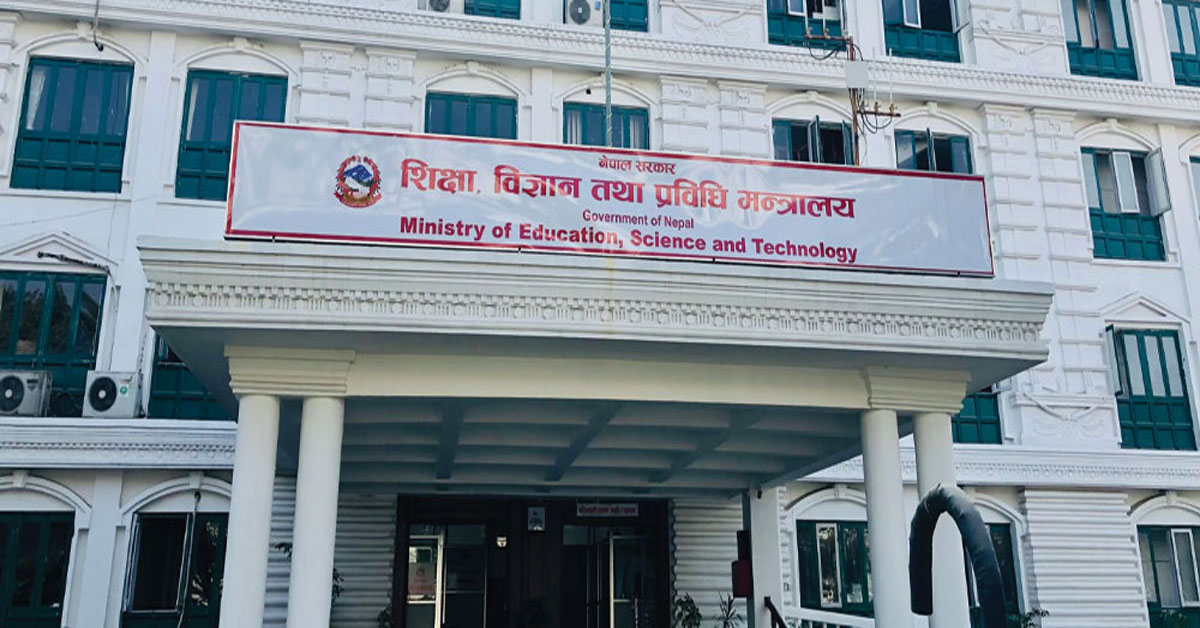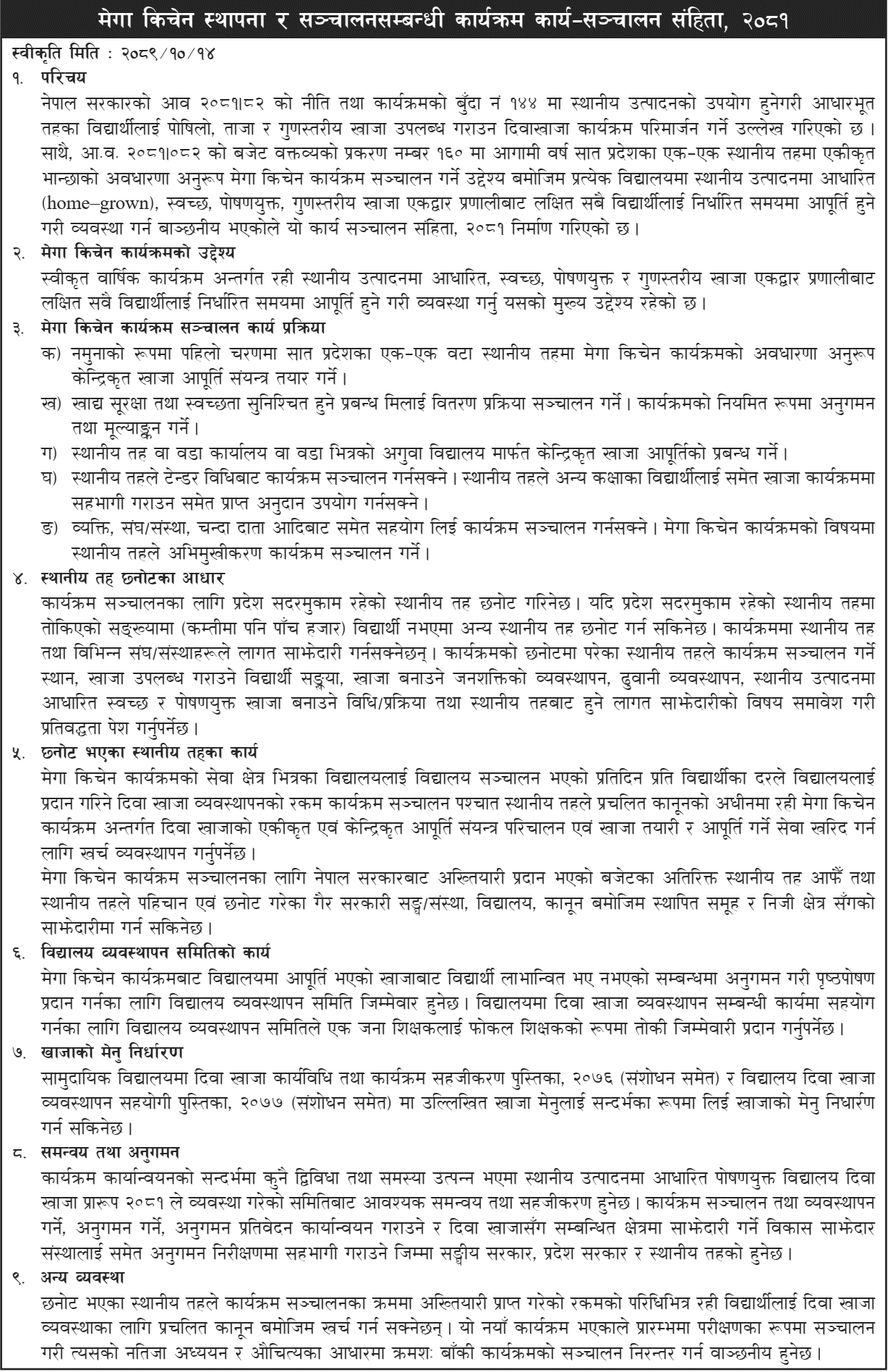
Mega Kitchen Operation Guidelines 2081
Point No. 144 of the Government of Nepal’s Fiscal Year 2081/82 policy and program mentions a revision of the mid-day meal program to supply nutritious, fresh, and quality meals to basic-level students using local produce.
Additionally, Section No. 160 of the budget speech of the same fiscal year outlines the concept of launching a mega kitchen program in one local level of each province.
With the aim of delivering clean, nutritious, and quality meals sourced from local products through a one-door system to all targeted students on time, this Operation Guideline 2081 has been prepared.
Objectives of the Mega Kitchen Program
The primary objective is to ensure timely supply of clean, nutritious, and quality meals to all targeted students based on local production through a centralized system, as part of the approved annual program.
Operational Process of the Mega Kitchen Program
-
In the first phase, a centralized meal supply mechanism will be established in one local level of each of the seven provinces as a model.
-
The distribution process will ensure food safety and hygiene. Regular monitoring and evaluation will be conducted.
-
Meal supply will be managed through the respective local level, ward office, or leading school within the ward.
-
Local governments may implement the program through tender procedures. They can also use the allocated grants to include students of other classes.
-
The program can be supported by individuals, organizations, and donors. Local governments will conduct orientation programs related to the mega kitchen program.
Criteria for Selecting Local Levels
Local levels located in the provincial headquarters will be selected.
If a selected local level does not have the required number of students (at least 5,000), an alternative local level may be chosen.
Cost-sharing from local governments and other institutions is allowed.
Selected local levels must submit a commitment covering:
-
Location for program implementation
-
Number of students to receive meals
-
Management of human resources for meal preparation
-
Transportation system
-
Meal preparation process using local, clean, and nutritious ingredients
-
Cost-sharing contribution from the local government
Responsibilities of Selected Local Levels
After program launch, selected local governments must operate the centralized meal preparation and distribution system under existing laws.
They must manage and use the allocated school meal funds, disbursed per student per school day.
In addition to the budget allocated by the Government of Nepal, local governments may implement the program in partnership with:
-
Identified and selected NGOs
-
Schools
-
Legally recognized groups
-
Private sector entities
Responsibilities of the School Management Committee
The school management committee will be responsible for monitoring whether students are benefiting from the meals supplied through the mega kitchen program.
A teacher must be appointed as the focal point to support meal management in the school.
Meal Menu Determination
Meal menus may be determined with reference to:
-
The Mid-Day Meal Procedure and Program Facilitation Booklet 2076 (with amendments)
-
The School Mid-Day Meal Management Support Booklet 2077 (with amendments)
Coordination and Monitoring
If any confusion or issue arises during implementation, necessary coordination and facilitation will be provided by the committee formed under the Locally Produced Nutritious School Mid-Day Meal Framework 2081.
Responsibilities for program implementation, management, monitoring, and enforcing monitoring reports, as well as involving development partner organizations in related areas, lie with the federal, provincial, and local governments.
Additional Provisions
Selected local levels must spend the allocated funds for mid-day meals in compliance with prevailing laws.
Since this is a new initiative, it will be implemented initially as a pilot. Based on the results and relevance, the program may be gradually expanded.
Approved on 2081/10/14



